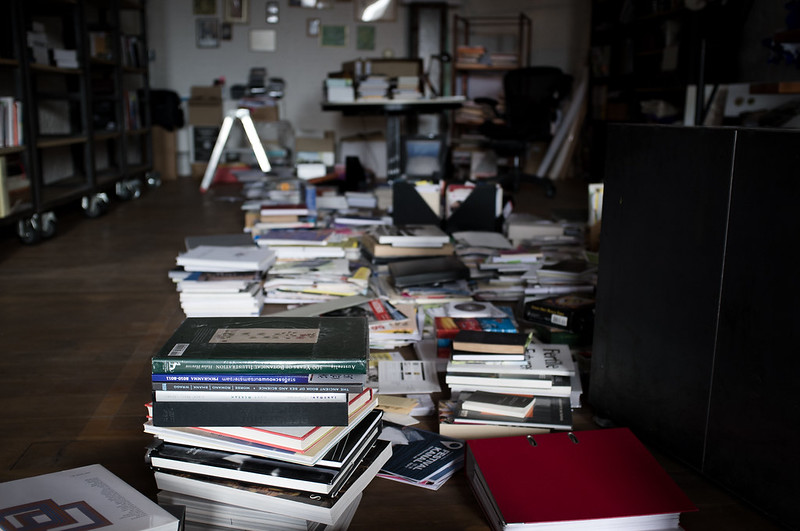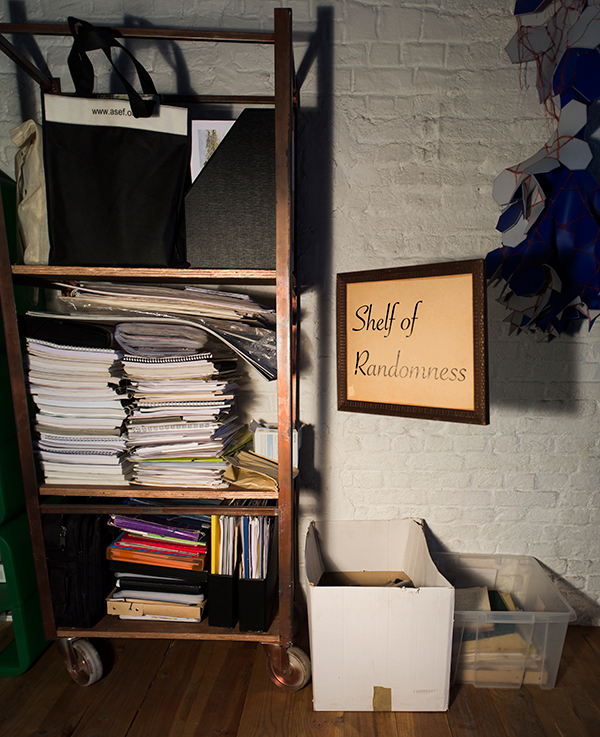This is an old revision of the document!
Table of Contents
Cataloguing Notes
To-dos from Monday, 20 January 2014
space
- cd/dvd/floppydisk sorting, discarding, organisation
- archival boxes as needed
- bookends
digital
- check existing catalogue entries for errors and improvements
- tags and collections
- catalogue and library hints/guides
- infographics for library guides
Diary of an archivist
Digital cataloguing: first steps, April 2013
We agreed to use the Zotero desktop and mobile apps to make a first pass of cataloguing FoAM's small but esoteric library. Aside from a few annoying glitches, we were able to go through the library quite rapidly, scanning the barcodes with the mobile app while setting aside those items that could not be scanned, or needed special attention (such as all the periodicals, magazines, etc.). A second pass involved manually looking up the ISBN numbers from within the desktop application, or searching online for the bibliographic data via WorldCat or similar and importing these citations into Zotero via the browser plugin, for the items that had no barcodes or could not otherwise be scanned.
Zotero online group libraries would seem to offer some flexible possibilities for extending our cataloguing initiative into a collective, inter-organisational library database. Moreover, since Zotero catalogues can be exported in several formats (BibTex export works very well, for instance), if we decide to use another system in future it should be quite easy to transfer the database over.
Sorting and consolidating: June 2013
After the heavy lifting of the initial pass, there remained what seemed to be an infinite regress of small items – journals, magazines, random books and journals that slipped through the dragnet, a vast pile of grey literature. And it was all a mess. I ripped everything off the shelves and out of the boxes and dumped the lot on the floor. From there I attempted to reassemble the material into the most basic and easy-to-use categories that were still somehow useable. I don't think this has been quite successful – but I think it's on the way.
Shuffling and information plumbing: January 2014
In my absence over summer some amazing assistants tackled and substantially resolved the most serious nightmare of this library – the ephemera. Thanks to them, this mass of the greyest of grey literature has now been sifted, sorted, and boxed by year for neat filing away on shelves.
However, we must rally our efforts. The deluge of ephemera is unstoppable and will require ever-renewed vigilance to ensure that the forces of greyness do not completely overwhelm us. But do not despair – together we shall conquer! Per aspera ad astra!
Shelves of randomness; walking libraries
An entire shelf of randomness has accumulated. It's not that this randomness can't be accommodated somewhere in the library, but rather, whether it should. It all comes back to sifting and sorting stuff out. There could be critical documents in this shelf. Yet there also appears to be many photocopied books or manuals, duplicates, looseleaf handouts that don't need to be kept. There are some notebooks and folios of apparent artistic effort.
We presently have the luxury of a dedicated library space (even if it often just ends up as a storeroom), but in coming years this will by no means be guaranteed. The physical part of the library could be split asunder, divided, spread to the winds and across numerous bookshelves, basements, cellars and larders over the world.
What are the implications? How might the collection become more “mobile”? First, the excess could be discarded. Multiple redundant copies, irrelevant material, useless ephemera… But second, the digital catalogue might become much more important: metadata, notes, comments, connections in the database, but also digitised copies. Although this opens a whole can of worms with all the (active or passive) copyright issues…
Organisation and rationale: the sections
- separate the more from the less “substantial” – in practice, books constitute the major substantial category
- periodicals cover any more-or-less substantial publication issued periodically; but I would avoid mixing these with the ephemera
- an unperiodicals section that incorporates all types of items such as exhibition openings, reports, yearbooks, etc. that are semi- or un-periodical: I'll probably catalogue these with the canned Zotero item type as “Conference proceedings”
- an audiovisual section at some point
- an A–Z fiction section (of mostly trade paperbacks, thanks to the N&M library bequest)
- an ephemera section, due to the vast quantity of brochures, leaflets, postcards, flyers, etc. that has accumulated; these are more transient and ephemeral than any of the preceding, but may be of value to retain in many cases
- at any time, the library can expand or contract with temporary autonomous subsections (such as Luea's specialised (and largely German-language) section of all manner of medical, medicinal and metaphysical books)
General notes
- I have chosen to file books alphabetically by name of the first author/editor/etc., falling back on title in the absence of an explicit author
- linking to/from the reading_notes and catalogued items may prove interesting and useful, particularly as files can be attached to Zotero items
- Zotero is more geared to cataloging individual references (e.g. articles in journals) rather than whole issues; one solution is to catalogue them as “books,” with a note indicating what volume/issues are in the library; important individual articles within these periodicals could then be added as separate items
- I'm using the following format to note the individual issues of periodicals:
year [volume:issue] additional info(additional info can be season/month(s), thematic name of the issue, etc.); this is a bit kludgy, but at least in this format the notes will sort by date and issue for easy reference - ISO 639-3 three letter codes for the
Languagefield: multiple languages separated by commas (e.gnld,fra,eng> ISO 639-3 > http://www-01.sil.org/iso639-3/codes.asp
Further entangling
- distributed collections (c.f. connected libraries)
- ISBN → BibTeX with Ottobib: http://www.ottobib.com/ and http://manas.tungare.name/software/isbn-to-bibtex/
- “The Little Library” project for CC digital collections
- collection of etexts we could upload as adjuncts to physical items


